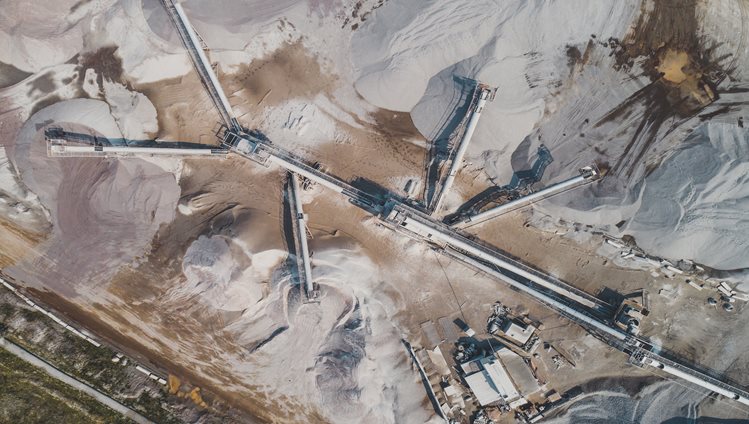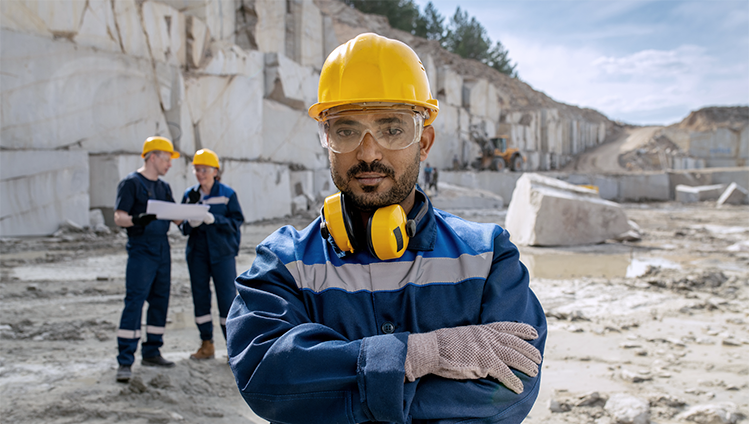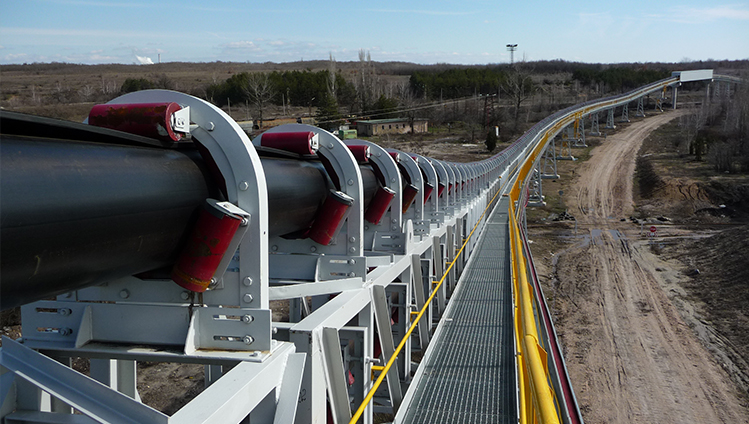Agregates, generally available in the form of a bulk product, are often classified by particle size and consistency. They can be subdivided into sand and natural stone aggregates, which are crushed aggregate stone of various sizes extracted in quarries depending on end users’ needs. Sand and stone are omnipresent in our everyday life and used in many industries for a range of purposes
While most people associate sand with seemingly endless white beaches, this material can be found in many products – such as toothpaste, electronic chips, glass or solar cells. The construction industry needs sand most of all to make concrete, and the boom in this sector has particularly fueled demand for sand and its slightly coarser relative: stone.
Increasing demand for sand and stone

Sand and stone are not only needed for residential and commercial foundations, they are also the base materials used in road and bridge construction. Estimates suggest that up to 50 billion metric tons of sand and stone are consumed worldwide each year. Sand, which is the most utilized resource after water, is mined nine times more than crude oil. According to further estimates based on concrete consumption, global demand for sand and stone has tripled in the past 20 years.
But where does the raw material in high demand come from? For millions of years, mountains and rock formations have been weathering into stone, sand and dust, carried by precipitation through watercourses into the oceans. Today, the sand that the construction industry needs is not usually to be found in the desert or on the beach. What is needed above all is coarse-grained sand from gravel pits or from the depths of the seas. However, extracting the materials on land and in the sea creates new challenges for transportation and processing.
Modern conveyor belts increase efficiency
Apart from the increasing demand, the entire aggregates sector is facing a number of challenges. The continuing global population growth and ongoing urbanization will also require new solutions in the coming years. Where will the raw material come from in the future? How can companies operate in a fashion that is more environmentally friendly, more efficient and more profitable? And how can extraction be improved by mitigating dust and noise in operation?
While the number of tasks is increasing in this industry, some nations are already improving their policies on sand mining. Others are banning exports because they are beginning to realize the problems it has caused in their societies, for the environment and for people’s livelihoods. Meanwhile, companies operating in this industry are continuously searching for sustainable innovations and already using some intelligent solutions – no matter what type of aggregate.
For example, modern belts have compound options to help prevent material from sticking to belts and thus decrease the amount of airborne dust and cleanup while improving the life of the conveyor components and the amount of material conveyed. This is a win-win situation for the end user: higher profitability and better environmental stewardship. Other improvements to conveyor belts have been created in both the rubber compound, better abrasion and better cut-gouge resistance, as well as more abuse resistant fabric reinforcements that help prevent impact damage from large rocks.
Digitalization provides smart solutions
Another global trend that offers diverse opportunities for the future is digitalization. Already today, smart conveyor monitoring systems make it possible to determine the health of various conveyor components at any time. Via continuous monitoring, it will be possible to manage the overall system condition to ensure its availability. Thanks to reliable system data, companies can even track the performance of their plant processes.
Belt monitoring systems help to further increase reliability by making it possible to determine the condition of a conveyor belt at any time. Thus it is possible to manage the belt’s condition to mitigate downtime from either a planned or unplanned event. For example, the steel cord monitoring system detects, identifies, and prioritizes issues during operation for maintenance and repair based on the size and position of the damage. This also leads to higher efficiency as the prevention of belt degradation extends the belt’s life and potentially avoids catastrophic belt failure.
Comprehensive services serve as key to profitability
To raise efficiency and profitability, the equipment also needs support through all stages of its life cycle. From installation to replacement, from conveyor belt splicing to inspections, audits, maintenance, repair and refurbishment – the portfolio of services offered for conveyor belt systems is already very large.

The topic of recycling cement is of interest in this sector. There is a clear tendency to rely on an almost closed cycle in countries with a low sand supply. The recycling trend is also evident with regard to conveyor belts, as companies and suppliers are looking for ways to dispose of their assets responsibly. However, as companies mostly ask for specific sizes of stone with particular characteristics, recycled concrete is not yet meeting the industry’s requirements and thus still offers a lot of development potential.
Continental offers various industry improvements
The aggregates industry is core to our global economy, and as demand is expected to increase, it will always be looking for innovations to improve product component life, reduce costs, and optimize production. Application-specific conveyor belting and comprehensive service are important building blocks to increase the reliability of products and customer satisfaction.
As a globally acting, highly technical and customer-oriented organization, Continental offers a wide range of solutions and comprehensive service for operating companies in this sector. The company is positioned perfectly to help its aggregate customers improve on these key bottom-line metrics while improving their environmental footprint by reducing dust.








